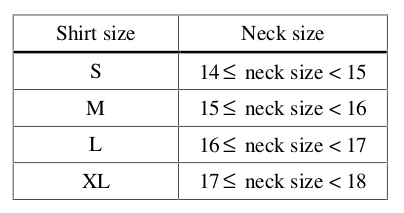Binomial Distribution#
2004, Free Response, #3
At an archaeological site that was an ancient swamp, the bones from 20 brontosaur skeletons have been unearthed. The bones do not show any sign of disease or malformation. It is thought that these animals wandered into a deep area of the swamp and became trapped in the swamp bottom. The 20 left femur bones (thigh bones) were located and 4 of these left femurs are to be randomly selected without replacement for DNA testing to determine gender.
Let X be the number out of the 4 selected left femurs that are from males. Based on how these bones were sampled, explain why the probability distribution of X is not binomial.
Hint
Are you selecting the femurs with or without replacement? What does this tell you about the independence of observations in this sample?
Suppose that the group of 20 brontosaurs whose remains were found in the swamp had been made up of 10 males and 10 females. What is the probability that all 4 in the sample to be tested are male?
The DNA testing revealed that all 4 femurs tested were from males. Based on this result and your answer from part b*, do you think that males and females were equally represented in the group of 20 brontosaurs stuck in the swamp? Explain.
Is it reasonable to generalize your conclusion in part c pertaining to the group of 20 brontosaurs to the population of all brontosaurs? Explain why or why not.
2006, Free Response Form B, #6
Sunshine Farms wants to know whether there is a difference in consumer preference for two new juice products—Citrus Fresh and Tropical Taste. In an initial blind taste test, 8 randomly selected consumers were given unmarked samples of the two juices. The product that each consumer tasted first was randomly decided by the flip of a coin. After tasting the two juices, each consumer was asked to choose which juice he or she preferred, and the results were recorded.
Let p represent the population proportion of consumers who prefer Citrus Fresh. In terms of p, state the hypotheses that Sunshine Farms is interested in testing.
One might consider using a one-proportion z-test to test the hypotheses in part #a. Explain why this would not be a reasonable procedure for this sample.
Let X represent the number of consumers in the sample who prefer Citrus Fresh. Assuming there is no difference in consumer preference, find the probability for each possible value of X. Record the x-values and the corresponding probabilities in the table below.

2003, Free Response, #3
Men’s shirt sizes are determined by their neck sizes. Suppose that men’s neck sizes are approximately normally distributed with mean 15.7 inches and standard deviation 0.7 inch. A retailer sells men’s shirts in sizes S, M, L, XL, where the shirt sizes are defined in the table below.

Because the retailer only stocks the sizes listed above, what proportion of customers will find that the retailer does not carry any shirts in their sizes? Show your work.
Using a sketch of a normal curve, illustrate the proportion of men whose shirt size is M. Calculate this proportion.
Of 12 randomly selected customers, what is the probability that exactly 4 will request size M ? Show your work.
2014, Free Response, #2
Nine sales representatives, 6 men and 3 women, at a small company wanted to attend a national convention. There were only enough travel funds to send 3 people. The manager selected 3 people to attend and stated that the people were selected at random. The 3 people selected were women. There were concerns that no men were selected to attend the convention.
Calculate the probability that randomly selecting 3 people from a group of 6 men and 3 women will result in selecting 3 women.
Based on your answer to part a, is there reason to doubt the manager’s claim that the 3 people were selected at random? Explain.
An alternative to calculating the exact probability is to conduct a simulation to estimate the probability. A proposed simulation process is described below.
Proposed Simulation
Each trial in the simulation consists of rolling three fair, six-sided dice, one die for each of the convention attendees. For each die, rolling a 1, 2, 3, or 4 represents selecting a man; rolling a 5 or 6 represents selecting a woman. After 1,000 trials, the number of times the dice indicate selecting 3 women is recorded.
Does the proposed process correctly simulate the random selection of 3 women from a group of 9 people consisting of 6 men and 3 women? Explain why or why not.